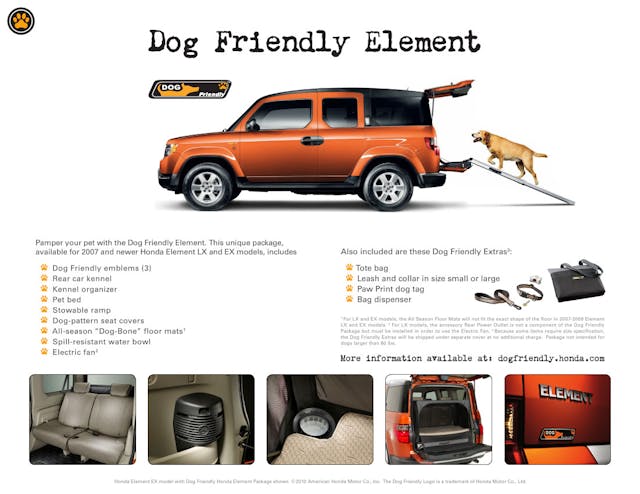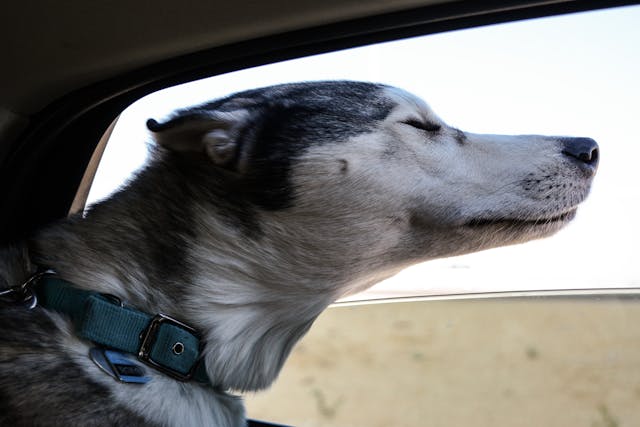Should dogs put their heads out car windows? Florida bill says no
Dogs love cars almost as much as humans love dogs. They will gladly hop into a car or truck and then seemingly enjoy the ride. There are few sights that more quickly elicit a smile than a dog sticking its head out a vehicle’s window, nose into the wind, ears flapping. Sometimes, the dog even looks like it’s grinning.
Under a new animal-welfare bill proposed by Florida senator Lauren Book (D-Broward), letting Fido or Rover catch a breeze could catch you a moving violation in the Sunshine State.
Dogs aren’t the only animals covered by Senate Bill 932, which prohibits the declawing of cats (except for therapeutic purposes) and increases the penalties for animal cruelty, though canines are the only species covered with restrictions when being transported in a motor vehicle. The idea isn’t just to protect dogs by keeping them crated or harnessed; it’s also to protect humans from getting struck and injured by an unrestrained pet in the event of a collision.
In addition to making it a traffic violation to allow a dog to extend its head or any part of its body outside the window of a car operating on a public road, Florida Senate Bill 932 also would prohibit a driver from holding a dog in their lap, letting it sit on the gas tank of a moving motorcycle, transporting a dog in a towed vehicle, or transporting a dog in an enclosed cargo space like a trunk or on a fender, hood, roof, or running board.
The dog must be either secured in a crate or with a harness or pet seatbelt. Dogs in the beds of pickup trucks must be secured in a crate that itself is secured to the bed and has sufficient interior room and protection from the elements.
The part about transporting a dog on the roof of a car may be an oblique reference to a somewhat infamous event in the family history of 2012 Republican presidential candidate Mitt Romney. (While on a 12-hour road trip from Massachusetts to Ontario, the Romneys put their Irish Setter, Seamus, in a carrier on top of their car.) Senator Book is, after all, a Democrat, and most motor vehicles haven’t had running boards since the 1930s. The ones found today, on high-riding trucks and SUVs, retract once the doors are closed.
It’s possible that Book is referencing early car accessories that in fact did transport dogs on the running boards of cars. An advertisement published in the June, 1936 issue of Modern Mechanix magazine says that your dog could ride “safely and comfortably” in a large canvas sack (with a “hole for head”). The sack would be suspended by hooks from the frame of a rear window and secured to the running board with two C-clamps fastened to a wooden board sewn into the bottom of the sack.

An earlier, 1920s take on the same general idea was the Bird Dog Palace, a small cage that was also clamped to the running board and promised “Traveling Comfort for the Dog.” From the name “Bird Dog Palace,” and the advertisement’s mention of “sportsman’s equipment,” the intended occupants were hunting dogs. In such pursuits, the animals can get dirty and wet, so the driver’s comfort was also likely a factor. Driver convenience? Not so much.
The Bird Dog Palace took up most of the running board, blocking the driver’s door. The Palace was made of “high quality automobile materials” and finished with “genuine DuPont Duco paint,” while its interior wooden parts were covered to protect them from dogs’ urge to gnaw. Made in Golden, Missouri, the single-dog version was priced at $12.50. A Palace with room for two was a half dollar more.

In more recent years, even before you started seeing paw-shaped “Dog Mom” stickers on the back of crossovers, the auto industry had taken note of the needs of dogs and their owners. Already popular with dog owners because of its easily hosed-down interior, in 2007, Honda introduced the “Dog Friendly” version of its Element utility vehicle.
This vehicle highlighted a family of Dog Friendly accessories for the Element that included second-row and cargo-area pet restraints, a cushioned and elevated pet bed in the cargo area with space for a spill-resistant water bowl and a nearby fan for cooling off pets, all-season rubber floor mats, and an extendable cargo area load-in ramp—like you’d find on a U-Haul truck—to make it easier for dogs to climb into the Element. Also included were a leash and collar, dog tag, a tote bag, and a dispenser for plastic bags.
(After thousands of years of humans manipulating the dog genome so our four-legged friends could assist us, humans now can’t walk their dogs without carrying a plastic bag to bring home the dogs’ waste. Anyone else find that ironic?)

Dogs like to chase cars, and now automakers like to chase dog owners.
In 2017, Nissan introduced the X-Trail 4Dogs SUV, billed as “the ‘pawfect’ car for family adventures.” Like the Dog Friendly Element, the 4Dogs X-Trail had an access ramp, along with dedicated cargo space to keep up to two dogs comfortable and safe, a two-way “dog cam,” and a built-in pet shower and dryer.
Unlike the Dog Friendly Element, the X-Trail 4Dogs was not actually available to the 90 percent of car owners who, a Nissan survey showed, wanted more dog-friendly features; it was only a concept vehicle.
Having found, in crash testing, that an unrestrained dog can hit passengers with a force equal to about 40 times its body weight, Volvo offers a line of official dog accessories that includes rear-seat harnesses as well as dog gates and cargo area crates designed, with a Swedish touch, to integrate with the interior styling. As a matter of fact, at one Volvo auto-show press conference, swag given to journalists included a dog car harness that attaches to a second-row seatbelt.
After that bit of car canine history, you might wonder why dogs like to stick their heads out of car windows in the first place.
Some experts think that it has to do with dogs’ sense of smell. Humans rely primarily on vision, but most canines “see” the world through their olfactory sense. Not only does a dog’s nose have two different air passages, one for breathing and one for smelling, it has as many as 300 million scent receptors, sixty times the number in a human nose. The signals from those sensors are processed by an olfactory cortex in the dog’s brain that is 40 times the size of the comparable structure in humans.

“Dogs receive more olfactory stimulation with their heads fully outside the car versus inside the car,” says Natalie Zielinski, director of behavior services at the Wisconsin Humane Society.
“When sticking their head out the window, they can smell every person in the street, every trash can they go by, every patch of grass, restaurant, and other dogs.” says the ironically named Jennifer Cattet, the owner of Medical Mutts, a service-dog training center in Indianapolis and animal behavior researcher.
“It’s like watching TV for us,” Cattet tells Discover.
That may be a mixed metaphor, since many dogs also have keen vision. An entire family of breeds called “sight hounds,” which includes greyhounds, borzois, Afghan hounds, and Irish wolfhounds, hunt and chase by vision, not just smell. Dogs sticking their heads out of car windows may just be enjoying the view.

Zielinski described an open car window as a sensory trifecta for dogs. In addition to a smorgasbord of sights and smells, the air blowing on their faces and vibrissae, or “whiskers,” is likely a pleasant sensation. Cattet also said basic behavior is also at play, since dogs are naturally claustrophobic.
“When dogs are confined in any capacity, they tend to look for an opening,” she said.
Another explanation of why dogs like to stick their heads out of car windows may be related the same reason humans use a switch to roll down those same windows: to cool off. Dogs don’t sweat like humans. They control their body heat through the pads of their feet and by panting. To use an automotive metaphor, dogs’ long tongues are heat exchangers; putting their heads out of car windows allows those biological radiators to work very efficiently.
What say you, Senator Book?
***
Check out the Hagerty Media homepage so you don’t miss a single story, or better yet, bookmark it. To get our best stories delivered right to your inbox, subscribe to our newsletters.



Seems like there is no end to the foolish edjucated people inventing unnessesary laws to make. Whenever these laws are made there is no allowance for little towns, like I live in, that only have 30 m.p.h. streets in them which are slow enough to stop worrying about dog eye damage but the “big city” laws will still apply. Seat belt laws apply even though death and injuries are way down and I mean WAY DOWN in these tiny cities but yet expensive tickets still get issued. Rediculous! Dogs should obviously not be allowed, by the OWNERS, to stick their heads out at significant speeds but don’t make a law that gets innocent people traffic fines FOR NO GOOD REASON in little cities that are not the problem since they have slow speeds and insignificant accidents. Laws that protect us from ourselves have no business being enacted. Remember, dogs are not children.
We had a dog who loved having her head out the window so much she figured out how to work the window up/down button in the backseat. We got her a pair of goggles, nd the problem was solved. Our most recent dogs only got the windows down in the neighborhood, where the speed limit is 30 mph or less. Not all this bill is bad, because there are idiot humans in the world, but it’s another unnecessary infringement of our liberties by a politician who belongs to the “we know better what’s good for you than you do” school of nanny-staters.